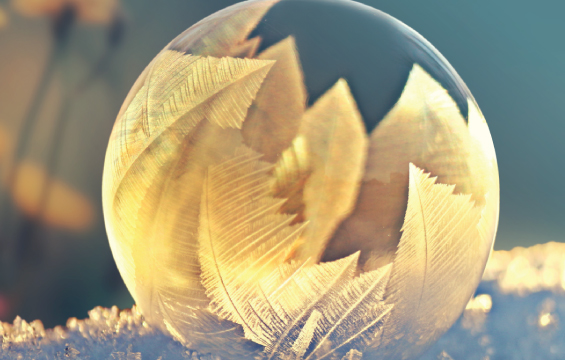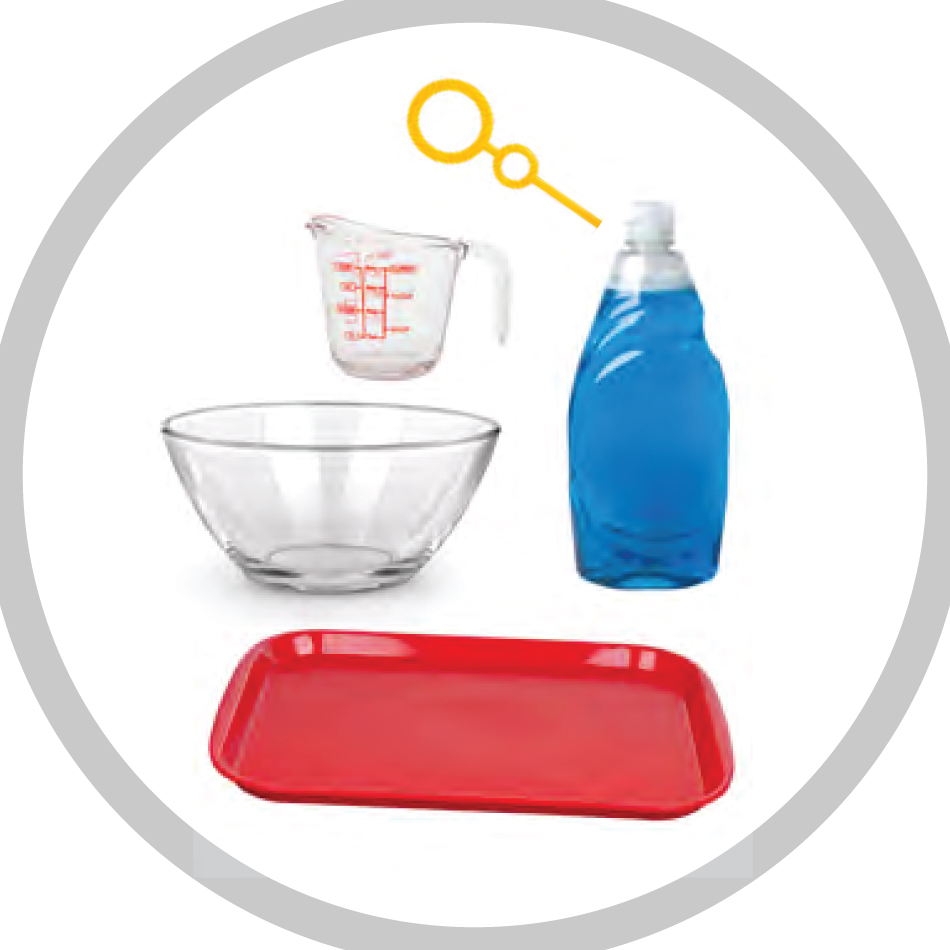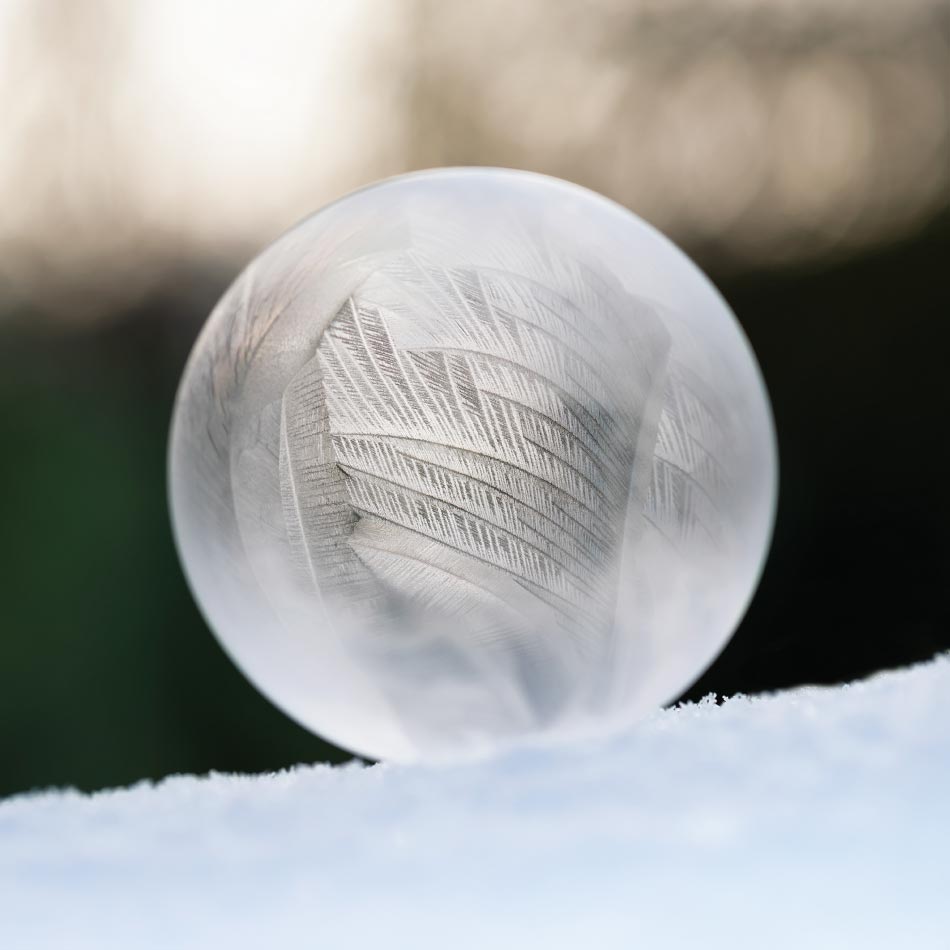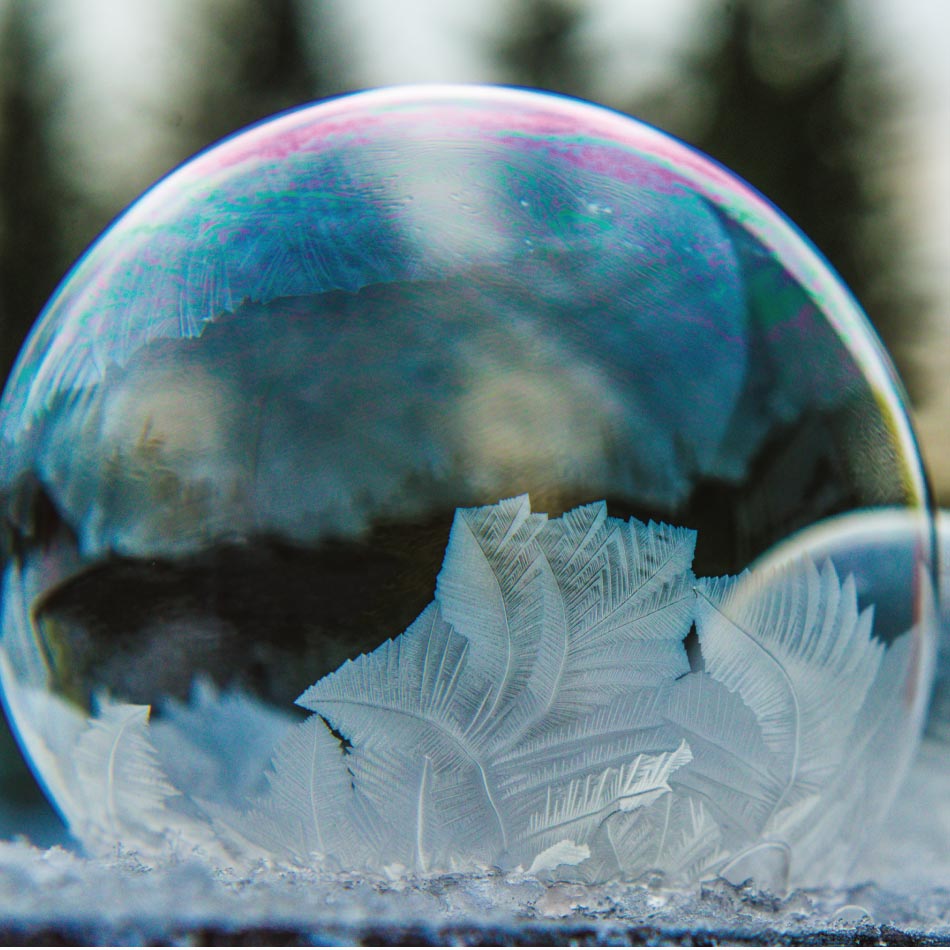Make Ice Orbs
Freeze bubbles to make magical crystal creations
- All
- Things to Make
- Experiments
- Get Outside

What you’ll need:
- 3-4 cups of water
- Mixing bowl
- Shallow dish like a pie plate or lipped tray for dipping your bubble wand
- 1 cup of dish soap (the brands Joy or Dawn work well)
- 1/3 cup of glycerin (substitutions: 1/3 cup of honey or 1/2 cup of corn syrup)
- Bubble wand, slotted spatula or squeeze bottle
- Straw (optional)
- Fabric (optional)

Activity setup:
1. Make your bubble mixture
Glycerin option:
In your bowl, mix 4 cups of water, 1 cup of dish soap and 1/3 cup of glycerin. Pour your mixture into the tray.
No glycerin? No problem! Try these substitutions:
With honey: mix 4 cups of water with 1 cup of dish soap first, then add 1/3 cup of honey.
With corn syrup: mix 3 cups of water, 1 cup of dish soap and 1/2 cup of corn syrup.
Tip: If you chill the bubble mixture for a few hours, you’ll get a better result when you go outside.
2. Make bubbles
Ice orbs form easily when the temperature is below -25°C. On a very cold day, go outside and find an area sheltered from the wind.
Dip the opening of the bottle into the mixture, and squeeze it to create bubbles. Or dip your bubble wand or slotted spatula into a tray of your mixture and wave it around. Or blow into your bubble solution with a straw to make a bunch of little bubbles. Having more bubbles increases your chance of success.
Gently place your bubbles on a textured surface such as a patch of snow, a shrub or a piece of fabric, so the bubbles can rest without popping, making them easier to observe.
3. Not cold enough? Use your freezer
Pour a tablespoon of the bubble solution onto a small plate. Using a wand or straw, make a bubble. It might take a few tries to get a bubble that lasts!
Put the plate in the freezer.
Check on your bubbles every 10 to 20 minutes to see how ice crystals form.

What's Happening:
A bubble is made of air trapped inside a soapy film. The soap mixture that holds the air has three very thin layers. Think of it as a sandwich made of two layers of soap with water between them. The water layer freezes at warmer temperatures—so, more quickly—than the soapy layers. As ice crystals form on the bubble’s surface, tiny cracks will form. Any air trapped inside will diffuse through the tiny cracks between the ice crystals. The eventual sudden drop in internal pressure will cause the bubble to burst.

Did you know?
Why do we need glycerin, corn syrup or honey when making bubbles? These viscous liquids reduce the surface tension of the water, which tries to pull the sides of the bubbles together and make them pop. It also makes the bubble solution thicker. This thicker skin of the bubble keeps the water from evaporating quickly, making bubbles last longer. It also makes bubbles stronger so you can make them bigger.